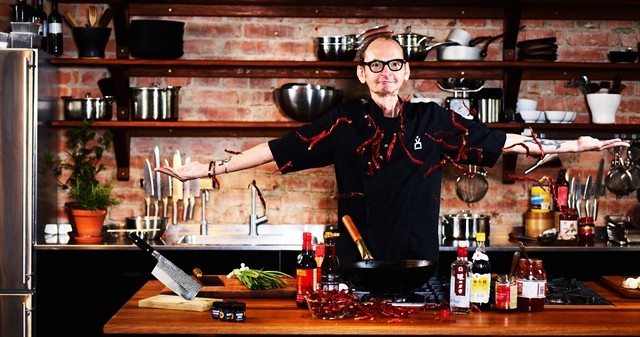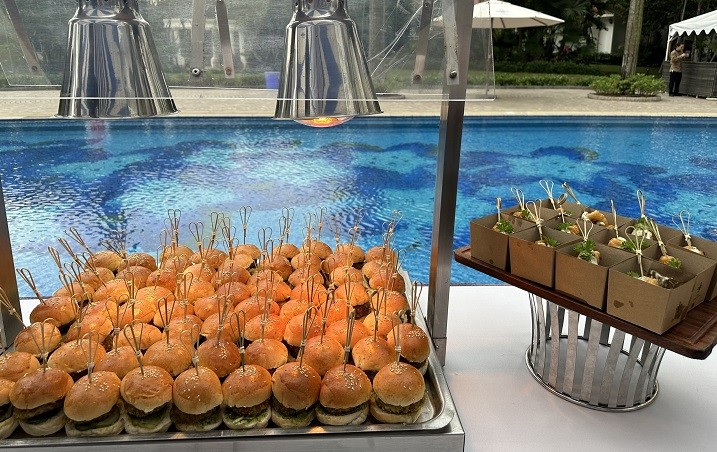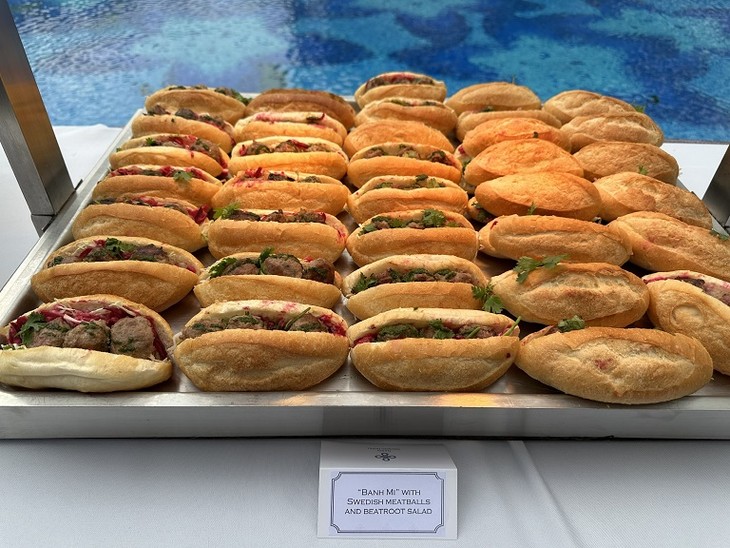(VOVWORLD) - Hanoi gourmets were recently been treated to a number of Swedish and Vietnamese delicacies at a culinary event titled “Taste of Sweden”. The event, hosted by the Embassy of Sweden in Hanoi, aims to foster cultural exchange and celebrate the shared passion for cuisine between the two nations. Renowned Swedish chef, Mr. Erik Videgård he was inspired to design a special menu which highlights the best of Swedish and Vietnamese cuisines.
 Renowned Swedish chef Erik Videgård. (Photo courtesy of the Swedish Embassy) Renowned Swedish chef Erik Videgård. (Photo courtesy of the Swedish Embassy) |
Chef Erik Videgård coordinated with the chefs of the Daewoo Hotel to combine a number of delicacies known as Swedish “Mellanmål” with their Vietnamese counterparts.
“Mellanmål” is something we usually have when the kids come back from school in the afternoon. We eat some ‘Mellanmål’. You’re not too hungry and waiting for dinner. ‘Mellanmål’ is very much a Swedish tradition. Usually we have some hot chocolate along with some sandwiches with cheese. Those are typical things we have,” Erik Videgård said.
“Mellanmål” refers to light meals enjoyed between main courses, typically in the afternoon or at midday. These delightful bites provide nourishment, help maintain focus, and emphasize the importance of taking breaks during the day, Erik said. But “Mellanmål” was just one of the many dishes he introduced at the “Taste of Sweden”.
 Swedish delicacies are brought to “Taste of Sweden”. (Photo: VOV5) Swedish delicacies are brought to “Taste of Sweden”. (Photo: VOV5) |
“I brought some ingredients from Sweden. For example, the sausage is a very old Swedish recipe as is the casing around the sausage. I brought it with me from home. The recipe for the sausage is from the 1900s. The outer casing is made from lamb intestines. The lamb casing makes it crunchy when you bite into it. Here we are making it with a ‘Banh Xeo’ wrapping outside,” Erik Videgård said.
When asked about his Swedish version of “Banh Xeo” (sizzling pancakes), a popular Vietnamese dish, Erik Videgård said, “Well, it’s the normal Vietnamese style with the ingredients of turmeric, herbs, and flour. You can see, we wrap ‘Banh Xeo’ around the sausage and inside, there’s also a shrimp salad. The shrimp salad is combined with horseradish, mayonnaise and dill, a lot of dill.”
With a career spanning more than four decades, Videgård has established himself as a trailblazer, introducing new flavors and cuisines to Swedish palates. In the early 1990s, he established a groundbreaking move by introducing Asian flavors, including Vietnamese cuisines such as “Nem Cuon” and “Banh Mi” to Sweden when they were relatively unknown in the country. This bold step revolutionized Swedish palates and paved the way for a broader appreciation of exotic flavors.
 (Photo: VOV5) (Photo: VOV5) |
At the “Taste of Sweden”, Videgård once again showed his creativity beyond the border with Vietnamese “Banh Mi” stuffed with Swedish meatballs, and beetroot salad.
“We have put beetroot, cabbage, and Swedish meatballs inside in which I’ve included Vietnamese fish sauce instead of salt,” he said.
For Chef Dang Ngoc Son, who helped chef Videgård prepare the dishes, “Taste of Sweden” creates a space for a culinary exchange between the two cultures.
“The cooking techniques are sophisticated. For example, to make Swedish meatballs, we have to stir-fry the onion until it becomes translucent. Then we mix it with minced pork, spices, and herbs. This dish is served with a special kind of sauce made from Vietnamese herbs, including coriander, basil and beefsteak plants mixed with ground almond and olive oil,” said Son.
The lavish menu offered at “Taste of Sweden” pleased crowds of participants, particularly youngsters from schools in the area.
“I like the fish the most. I can feel the western flavor in the creamy sauce. Normally, Vietnamese fish is saltier, and spicier, but the sauce lessens the fatness of the dish,” said a visitor.
“This is the first time my family have tried Swedish cuisine. I am impressed with his Vietnamese ‘Banh Mi’ with distinctive flavors thanks to his creativity,” another visitor shared her feeling.